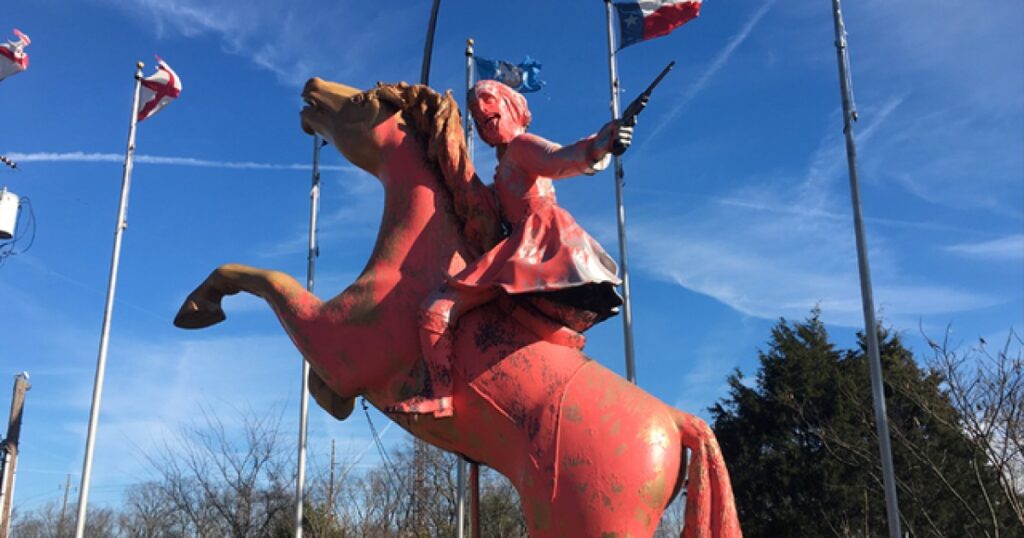In considering what should be done with monuments in the present, hostile environments toward what many perceive as symbols of hate, a case by case decision process seems to be the only thoughtful methodology. Competing factors such as public versus private land, local political power in the hands of liberal or conservative interests, and laws banning removal of statues create obstacles in even broaching these issues in many areas. For example, in Birmingham, Alabama the removal of the Confederate obelisk near city hall and the courthouse after protests and significant damage prompted the state’s Attorney General to threaten hefty fines for removing the monument. But at what point do citizens’ desires to change their local narrative overrule these antiquated laws?
In the case of the Confederate General and Ku Klux Klan founder Nathan Bedford Forrest, the statue depicting him in Memphis was removed in 2017 while another cartoonish caricature of him remains protected in Nashville on private land. Complete removal, however, creates a missed opportunity for education and contextualization. There is much to be learned from the time period a statue was commissioned and by who as there is from the statue itself. For example, free blacks in Wilmington, North Carolina created a community for themselves and successfully integrated into local politics. After blacks were violently pushed from the city in 1898 through intimidation, lynchings, and voter suppression, white supremacist rule retook the city. Multiple Confederate monuments were erected in the coming years, retaking the town unequivocally for whites.

By simply removing statues from places like Wilmington, this important dialogue would be completely lost. Relocation from public, government grounds, however, remains imperative. Museums and battle fields become appropriate settings for relocation, where contextualization can provide insight into the who, what, and why of each monument. New plaques can be placed with these statues indicting their original location and give readers information on why it came to its new location. These removals will take these monuments out of a spotlight for celebration and into an environment of reflection.